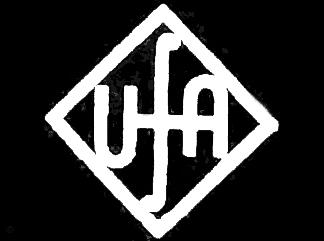The scholar Rashi (Rabbi Shlomo Yitzhaki - the name "Rashi" an abbreviation using the initials) defined the term "sheretz" as "any living being that is not higher than the ground - like flies, ants, beetles, worms, rats, mice, and all fish."
Later he defines a related term "remess" as "insects that are low, crawling on the ground, and look as though they are being dragged, because their movement is not clearly perceived."
There is a matter of two dimensionality in "sheretz"; they are "not higher than the earth". They lack height, the third dimension. In remess, there is a quality of unwilled movement: being "dragged".
In "sheretz" I understand motion (and "life" to the mediaeval mind) that is like a school of fish or a swarm of ants or a horde of mice: swarm behavior which although possibly "willed" shows no particular individuality, but rather a uniform movement. And that movement is mostly within a strict plane of motion, appearing two dimensional. In fact, since Rashi says "all fish", and fish are not even "on the ground", I take the movement of schools of fish to be Rashi's defining concept: motion restricted to a plane of 2 dimensions... even though the entire plane ( the school of fish seen as length and width ) may itself move within 3 dimensions; i.e., the school swimming in 2 dimensions may swim up, down, or sideways in 3 dimensions.
In other words, a movement that appears to be uniform with 2 dimensions, like a crowd of people seen from high in a bell tower above the town square as they move in one direction towards the cathedral: "they look like ants from way up here!"
In "remess", on the other hand, movement appears unwilling because there is no apparent individuation, rather the animals appear indistinct and form a blot of color, like a carpet, perhaps, being pulled and dragged here and there.
In Genesis, the word remess is used to describe all animal life, except Man. Mankind appears as individuals that move as individuals, not schools or swarms, and each human's movement (life) is clearly distinct the one from another.(At this point, it may be objected that Mankind often acts like a swarm and is a slave to crowd mentality, and that is true. The point is that Mankind's nature is to be individual, even though they may choose to lose a dimension now and then.)
In Genesis, the blessing of fertility is first given to fish, fowl, and animal life. As Zornberg says "To proliferate is, in a sense, the "sheretz" modality.
But early man did not have the numbers such as possessed by the fish in the sea nor the birds of the air. Elias Cannetti (the author of "Crowds") writes: "Men may press closely together and enact a multitude in traditional rhythmic movements, but they are not a multitude; they are few, and have to make up in intensity what they lack in actual numbers."
Zornberg: "When God blesses Adam and Eve, or commands Noah... "to be more"... "Fill the earth... abound on the earth [lit., swarm] and increase on it." there is a command to be like "sheretz-remess" of animals.
Zornberg: "Surrounded by emptiness, man seeks the animal faculty of increase. What man is blessed-commanded to do is not simply to propagate; the process in one, in Canetti's terms, of transformation:
Early man, roaming around in small bands through large and often empty spaces, was confronted by a preponderance of animals... Many of them existed in enormous numbers. Whether it was herds of buffaloes or springboks, shoals of fish, or swarms of locusts, bees, or ants, their numbers rendered those of man insignificant.
For the progeny of man is sparse, coming singly and taking a long time to arrive. The desire to be more, for the number of people to whom one belongs to be larger, must always have been profound and urgent, and must, moreover, have been growing stronger all the time... Man's weakness lay in the smallness of his numbers... In the enormously long period of time during which he lived in small groups, he, as it were, incorporated into himself, by transformations, all the animals he knew. It was through the development of transformation that he really became man; it was his specific gift and pleasure.This continues on to a discussion of Australian aborigines, whose ancestors believed themselves of a dual nature, both animal and human at once, each ancestor embodying a specific animal as part of themselves.
Zornberg:
"These Canetti sees as products of transformation. A successful and established transformation becomes a kind of endowment: it signified a connection with the numbers of animals incorporated into the human identity. Man desired the increase of the animals, since they were connected with man: ' When they increased, he also increased; the increase of the totem animal was identical with his own.' Plants, as well as animals, even insects, scorpions, lice, flies, or mosquitos can be designated as a totem" ' it can only be their immense number which attracts them; in establishing a relationship with them he means to ensure their numbers for himself."
In Genesis, man is told to proliferate and rule; to swarm yet to be above the swarm. It is to be swarmlike and attached to the earth ( or, in the case of fish, in the medium one lives ). It is also to have the third dimension, the height to be above the swarm and have an all-encompassing view of the world, and thereby to rule it wisely.
I have more to say, and shall refer back to this. But this is enough for now.
--
reprinted


















No comments:
Post a Comment